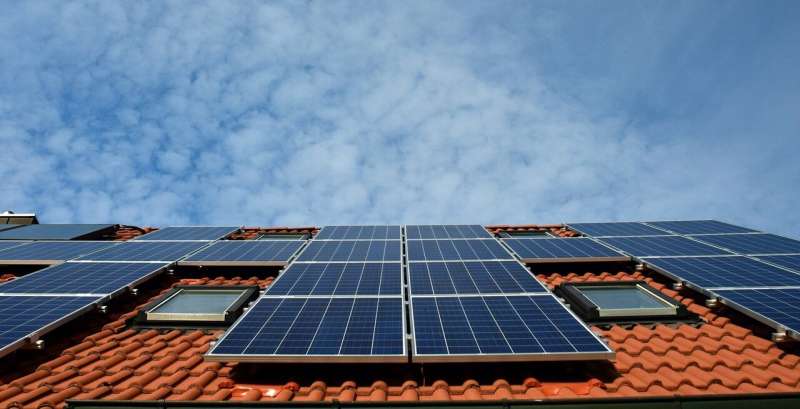Researchers propose novel multilayer structure to improve stability of passivating contact solar cells

Efficient separation and collection of photogenerated carriers through the formation of asymmetric electron and hole transport channels is one of the key issues for crystalline silicon (c-Si) solar cells and other types of photovoltaic devices.
Silicon heterojunction solar cells based on MoOx (x < 3) hole-selective contacts show significant advantages in carrier-selective transport. However, they face the challenge of long-term stability due to poor thermodynamic stability of MoOx.
A research team led by Prof. Li Dongdong at the Shanghai Advanced Research Institute (SARI) of the Chinese Academy of Sciences and their collaborators reported a novel stacked structure to improve the stability of c-Si solar cells.
The study was published in Advanced Functional Materials on August 26.
The research team introduced a SiO2 tunneling passivation layer at the MoOx/c-Si interface to suppress the redox reaction caused by the direct contact between MoOx and c-Si, which keeps the work function of MoOx at a relatively high level.
An ultra-thin V2Ox layer was deposited on the surface of MoOx film to improve the stability of the heterojunction structure in air and its resistance to sputtering damage.
At the same time, the indium tin oxide (ITO) layer was fabricated at the V2Ox/Ag interface, which effectively inhibited the migration of metal ion, and finally constructed a tandem structure of c-Si/SiOx/MoOx/V2Ox/ITO/Ag, with power conversion efficiency (PCE) of 20.0% and improved stability.
This work solved the stability issue of p-Type silicon solar cells with full area Si/MoOx/Ag contacts by introducing stable oxide layers on both sides of MoOx to prevent the interfacial reaction and evolution.
It provides a new approach to the study of compound/c-Si passivated contact heterojunction solar cells, which can be extended as a universal method to improve the efficiency and stability of heterojunction solar cells and other types of optoelectronics.
More information: Shuangying Cao et al. Stable MoO X ‐Based Heterocontacts for p ‐Type Crystalline Silicon Solar Cells Achieving 20% Efficiency, Advanced Functional Materials (2020). DOI: 10.1002/adfm.202004367















